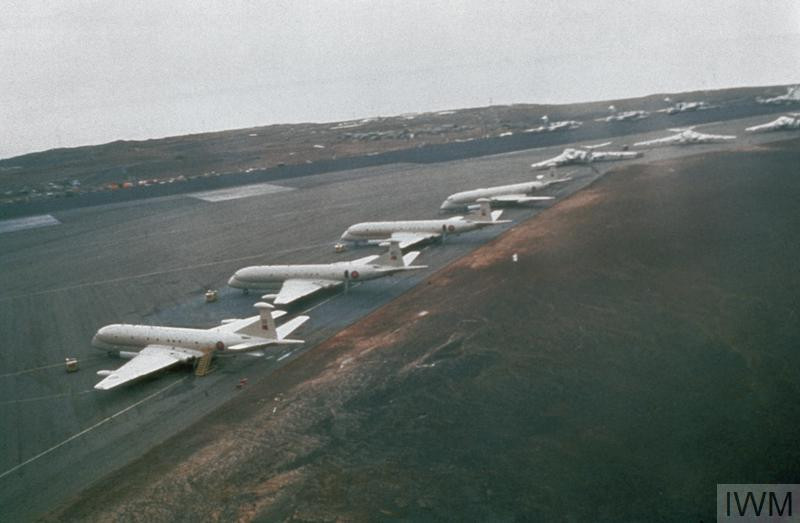The United States began the month of April by taking a broadly neutral stance towards the Argentine invasion of the Falkland Islands and the British response.
The country had supported United Nations Resolution 502, which called for an immediate end to hostilities, the withdrawal of Argentine forces and a renewed commitment to find a diplomatic solution to the crisis.
And the ties of a shared history, and of shared security and defence policies, meant that the United States could not risk losing the support of one of its closest and longest-standing allies as the Cold War continued to cast a long shadow.
But neither did the US wish to alienate Argentina, whose right-wing governing junta under General Leopold Galtieri was also seen as a useful friend in South America as fears of Soviet influence in Central America grew.
And if the junta lost heavily, and were thrown out of power, that vacuum could potentially be filled by a left-wing Peronist government, while the economic fall-out would have serious consequences for American banks, who had heavily invested in the country.
With British ships and aircraft already making their way towards the South Atlantic, President Ronal Reagan’s administration was keen to try to prevent the outbreak of full-scale hostilities, so late on Wednesday 7 April 1982 US Secretary of State Alexander Haig and his team of advisers embarked on an exhausting burst of ‘shuttle diplomacy’, flying into London first and later visiting Buenos Aires in an attempt to find some common ground.
His initial five-hour meeting with Margaret Thatcher on set the tone for the next fortnight, with Haig reporting back to Washington that the British Prime Minister, while preferring a diplomatic solution, was determined that the status quo would be restored and was quite prepared to use whatever force necessary to expel the invaders.
Haig covered some 30,000 miles in less than two weeks, but with Argentina sticking to their position of full sovereignty, and Britain demanding a return to the status quo – and the withdrawal of Argentine forces – before any progress could be made, the signs were not promising.
As the diplomatic effort got under way, Argentina was reinforcing its position in the Falklands, with Fuerza Aerea Argentina (FAA) C-130 Hercules aircraft carrying out a shuttle of their own, bringing men and equipment – including aircraft – to the islands throughout April and May.
Another Royal Fleet Auxiliary vessel left Portsmouth on 7 April for the long journey south – stores ship Stromness was another ship that had undergone a quickfire transformation and was tasked with carrying 45 Cdo RM on the voyage south.
British air activity on 7 April included the start of RAF Nimrod patrols around Ascension Island as ships and aircraft made their way towards the lonely Atlantic outpost – two aircraft of 42(TB) Sqn had flown in from RAF St Mawgan via the Azores, and as well as scouring the sea they supported the passage of Royal Navy nuclear submarines through the ocean.
On 7 April the British Government also served notice that a Maritime Exclusion Zone (MEZ) of 200 nautical miles would come into force around the Falklands from 12 April.
The British warned that nuclear submarines would be patrolling the zone, and could sink Argentine naval or military vessels within its boundaries.
* These posts can only give a brief overview of what was a complex and fast-moving situation, and cannot cover the involvement of every ship, squadron and unit in detail – for a much more comprehensive account see naval-history.net at https://www.naval-history.net/NAVAL1982FALKLANDS.htm
Today’s image, from the Imperial War Museum collection (© IWM FKD 1170) shows RAF aircraft, including Nimrod maritime patrol aircraft in the foreground, lined up on the tarmac at Wideawake Airfield on Ascension Island during the Falklands Conflict. The museum’s collection can be searched through https://www.iwm.org.uk/collections
